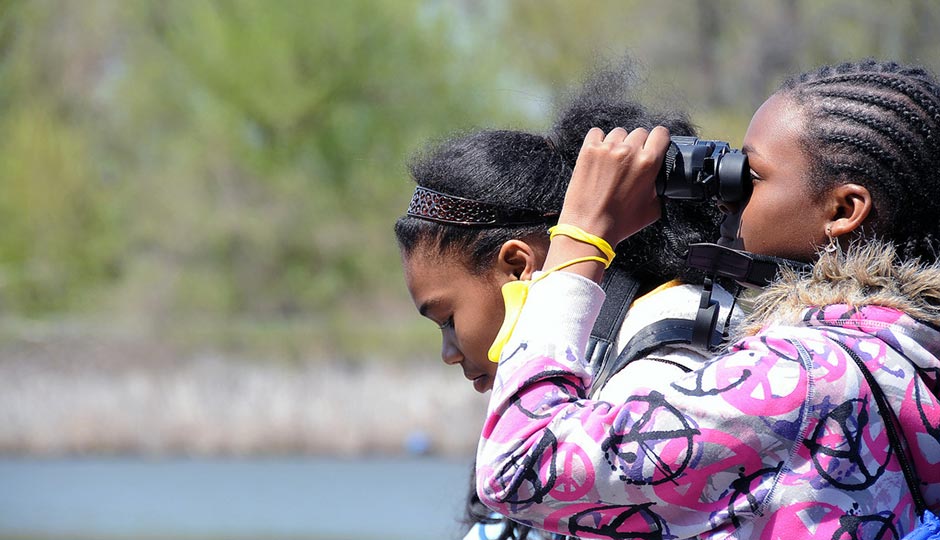Feds to Invest $1 Million Annually to Connect Heinz Urban Refuge, Southwest Philly

Students from Pepper Middle School, Longstreth Elementary and Norwood Elementary in Philadelphia bird watch on Tinicum Marsh at John Heinz National Wildlife Refuge in Pennsylvania. Photo | USFWS
The announcement was made at the urban refugee which is located smack dab between the bustling Philadelphia International Airport and the dense residential blocks of Southwest Philadelphia. Speakers, such as Mayor Jim Kenney, emphasized the value of having an area reserved for wildlife available for city youth.
“A lot of our kids are exposed to concrete, steel, glass [and] asphalt,” said Terry Williams, a partner at Heinz and president of the Eastwick Friends and Neighborhood Coalition. “But when they get the opportunity to come to a place like the Heinz, it’s a new prospective. It is a kind of paradigm shift for them as individuals.”
“All of our young people who live in neighborhoods that have seen more violence and more sheet-covered bodies than some soldiers see in a lifetime of war need this place,” added Kenney. “They need this place to become peaceful, to be less stressed, to learn about what nature really is about.”
Kenney said he believes this federal investment will be instrumental to creating opportunities for youth to reengage with nature.
The USFWS said the recurring $1 million investment will go toward environmental educational programs, building relationships with neighboring communities, providing jobs to youth and community members, addressing transportation and cultural boundaries to the refuge and expanding recreational opportunities at the refuge and the nearby Cobbs Creek and Bartram’s Garden.
John Heinz National Wildlife Refuge at Tinicum was the first urban refugee in America, first established in 1972. Since then many others have followed. They often serve as a haven for city dwellers who may be detached from nature.
Kevin Tran, a 17-year-old from Motivation High School, is a testament to the impact wildlife refuges can have on the city’s youth. During the ceremony he highlighted how working with Heinz Refuge had effected him and how he believes it can be beneficial to others.
“In my first year of working [at Heinz], I’ve never been so mentally and physically focused at such a consistent level in my life,” said Tran referring to work he did in Wissahickon Valley Park creating new trails for bicyclists.
“By the end of that summer, I learned so much in understanding my own self values,” said Tran. “In the upcoming second year I thought, ‘How else can they push me, what more can I do now that I’ve done this?’.”
He said he was stunned when the second year topped the first when he found out he would be creating lesson plans for children in the program. “When we got in front of them and we started teaching them about recycling, about bees, about the soil, their eyes just lit up. It’s something on that day that I still hold on [to] today as a memory.”
“It kind of shows you how powerful this organization is in bringing the youth from more urban areas and getting them to understand the importance of conservation in the city,” Tran said.
Follow @MariamDembele on Twitter.


